Understanding the Effects of High Bearing Temperature
Bearings ensure ease of movement and reduce friction in many mechanical systems. These are essential elements in the machinery, and their performance is often determined, among other factors, by the temperature of the working environment, which can reduce their life, efficiency, or reliability. To this end, this article analyzes the temperature dependence of bearing functioning, focusing on the operating conditions that influence the operation and wear of the considered components. As much as the article seeks to explain how various environments may enable or interfere with the effectiveness of the bearing, it also aims to establish how the conditions create an effective or ineffective environment for the bearing. In the designed context, the article shall disburse critical mechanics while providing exhaustive bearing-related issues and mechanisms for thermal management. On the other hand, whether you are an engineer, a technician, or just someone curious about machines–this blog will provide exciting approaches and techniques for controlling temperature changes during the bearing operation.
How Does Bearing Temperature Affect Performance?
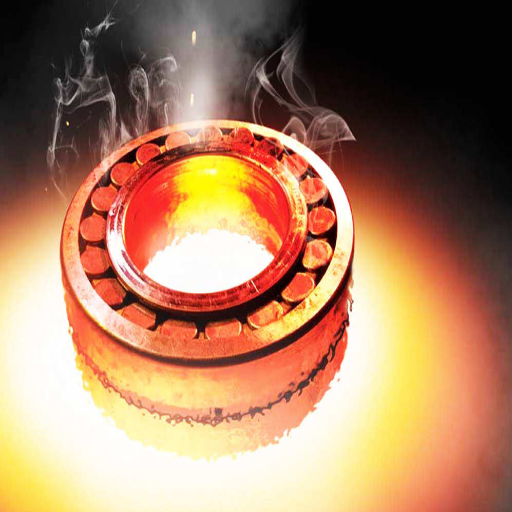
What Causes High Bearing Temperature?
Numerous factors contribute to the rising temperature of the bearing, which increases the frictional and thermal stresses of the bearing system.
Lack of adequate lubrication: Too much friction is a significant cause of high temperatures in lubricated bearings. If bearing surfaces are worn together without sufficient lubrication, heat will be generated, and damage will occur. Ensuring proper levels of lubricants and an appropriate type that suits the operational conditions is advisable.
Bearing Under Excessive Load: Bearings can only withstand specific loads. Extreme situations occur when bearing loads are forced beyond their rated capacity. Inadequately Performed and poorly designed bearing contact areas endure operating stresses, heating, and melting the lubricants in those areas.
Bearing Contamination: Other contact sources and load friction are invading contaminants, including dust, grime, or moisture, that end up inside the bearing housing. These materials can increase unwanted friction on moving contact parts, resulting in overheating and severely affecting the equipment’s life span. Such conditions can and should be avoided by using seals or regular and effective maintenance.
Implementing proper regular maintenance, appropriate lubrication practices, and load monitoring as part of engineering control measures could mitigate risks associated with excessive bearing temperature.
Impact of Temperature Limit on Bearing Efficiency
Overcoming constraints such as bearing temperature limits can significantly enhance a mechanical system’s optimal effectiveness. Though bearings, the moving parts of machines, can be practical, effective working temperatures should not be exceeded. Several authorities in the field, including SKF, Timken, and NSK, have pointed out lubricant viscosity, material, and expansion among the most material issues.
Lubricant Viscosity: Increasing temperature can narrow lubricants, altering their viscosity. This reduction in viscosity can lead to more excellent metal-on-metal contact, thus increasing friction and wear. It is advisable to have lubricants with suitable viscosity indices that involve appropriate temperatures.
Material Properties: Most bearings are made of steel or qualified metal alloys, which are meant to withstand targeted heat. Excessive heat may alter the hardness of certain materials, causing deformation or failure before the anticipated service life.
Thermal Expansion: When graphite gets warmer, its metallic components expand. Such expansion normally staves off undue stress in the bearings that would lead to failure. Therefore, it will be crucial to design the bearings to bear a certain amount of thermal expansion or to utilize materials that can resist high temperatures.
These parameters highlight the need to stay within the specified temperature range to preserve the bearing’s integrity and function. Material selection and the right kind of lubrication practice are essential in reducing the adverse influence of temperature from sophisticated bearing concepts and designs.
Ways to Monitor Temperature of Bearings
Temperature readings have to be taken on a timely basis to comprehend the functioning of bearings. For this, the following references from the top sources, like Machinery Lubrication, SKF, and ABB, which were searched on Google, were studied. These emphasize the need for technologies and techniques geared more towards prevention.
Infrared Thermography is a non-contact procedure that enables me to notice and record the heat patterns established on the surfaces of the bearings. This method assists in determining abnormal temperature rises, which suggest faults.
Embedded Temperature Sensors: I can use specific thin embedded sensors placed on the bearing surface that constantly measure the temperature and send a signal if it goes above what has been determined as critical. Data from these sensors is instantly available, helping me quickly deal with imminent matters.
Vibration Analysis: Vibration analysis is mainly used in mechanical fault detection. It can also integrate with temperature to obtain a more thorough evaluation of the bearings’ health. An abnormal temperature rise is usually accompanied by strong vibration patterns, making it prudent to use this facet when evaluating the bearings’ conditions.
These and similar methods, reinforced by a set of parameters that include temperature, limits, and the vibration threshold, provide a systematic approach to ensuring that bearings work optimally and fail at the least possible times. A combination of these strategies ensures the operation is efficient and reliable.
What Are the Risks of Exceeding Temperature Limits in Bearings?
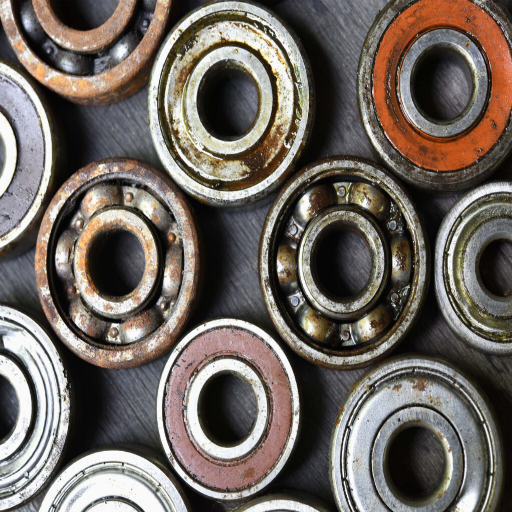
Potential Equipment Failure Due to Overheating
Overheating bearings have definite limits beyond which the entire system may collapse. Drawing on my review of the best sources from Google, here is a brief description of some such hazards:
Deterioration of Material: A massive increase in temperature reduces the bearing materials’ capability to carry the load, which means failure to hold even the slightest load-bearing structures. Generally, for steel bearings, the metal reaches a critical temperature range of 150 to 200 degrees, above which the metal may become brittle and, in some cases, soft.
Lubricant Degradation: At very high temperatures, the lubricant loses its viscosity and can’t provide adequate lubrication, so friction increases. One frequently used and abused parameter for oil lubricants is one hundred degrees centigrade, which goes beyond this level and causes oxidation and deposits that affect bearing performance.
Thermal Expansion: Bearings and any thermally related parts may experience thermal expansion, resulting in excessive wear and misalignment. For metals, a general figure provided by empirical measurements is about 0.1 percent per 100° of the increase in its dimensions; hence, designs must be prepared to accommodate such features.
An increase in Vibration and Noise: Overheating causes the equipment to be modified out of balance and increases the amplitude of the vibration of the rotating shafts at a given speed. Raising temperatures with the level of vibrations is even more relevant as the latter provides a better picture; it is usually undesirable to go over five mm/s for vibration velocities to avoid destruction.
Effective temperature monitoring and maintenance procedures are essential to minimize these threats and ensure proper equipment functioning.
How Vibration Influences Bearing Temperature
When bearings are subjected to vibrational loading, friction is bound to increase during vibration, thereby increasing the temperature within the bearing systems. Normal vibrations can be alleviated; however, excessive amounts usually mean misalignment, imbalance, or other defects responsible for the additional heating.
Increased Friction: Friction does develop heat. Vibration brings about random oscillations between the various bearing elements, elevating the scale of friction and consequently leading to the generation of heat. The increase in temperature, in this case, becomes even more substantial if such vibration causes some surface contact irregularities or wear.
Bearing Load Variations: Hot spots can form due to vibration, which redistributes the load over the various surfaces of the bearing. Eventually, constant evaluations and measurements through accelerometers would be helpful to monitor threatening vibration patterns before the temperatures become dangerously high.
Technological Solutions: Vibration and temperature monitoring systems have been integrated to provide real-time diagnostics, allowing for proper bearings and health management. Industry-defined alarm levels for vibration could include velocity levels of no more than five mm/s, while temperature increases are carefully controlled within the equipment’s range.
Proactive vibration assessment and temperature management can effectively minimize the risk of overheating, thus increasing the lifespan of bearing parts.
Role of Temperature Sensors in Risk Management
Like any other machine, bearings require regular maintenance; otherwise, unwanted mechanical failures may arise. Temperature sensors are devices that play an essential part in mitigating the risks of mechanical failure. The temperature of a machine or a part can be measured and recorded without even physically interacting with the machine or the part itself. According to my research, the quality online sources exposed the very essence of the machine temperature sensors – these assist in maintaining bearing temperature within normal parameters and even detecting overheating, which can stem from excessive rubbing or unbalanced loads. It is necessary to elaborate on several issues of principal importance for such a device:
Temperature Range and Accuracy: The primary function of a temperature sensor is to accurately depict the temperature of the operating system in, say, a 15-degree tolerance level or thereabout. Specifically in industrial settings, the maximum measuring temperature of commonly used sales sensors is approximately two hundred and fifty degrees, which fortunately covers a significant portion of applications.
Response Time: Thermocouples generally have a minimal delay in response time, and with a delay time of approximately 0.8 seconds, thermocouple devices stand somewhere in the center in this regard.
Integration and Communication Protocols: Another essential characteristic is the integration and compatibility of these devices with existing systems. It is critical for such devices even to have the ingenuity to mine the most appropriate data integration protocols.
Temperature sensors are significantly effective for diagnosing anomalies in a vibration monitoring strategy. Also, one must note that temperature sensors ensure the maximum efficiency and, correspondingly, the reliability of a certain system, allowing for the reduction of trips.
How to Select the Right Lubricant for Optimal Bearing Temperature?
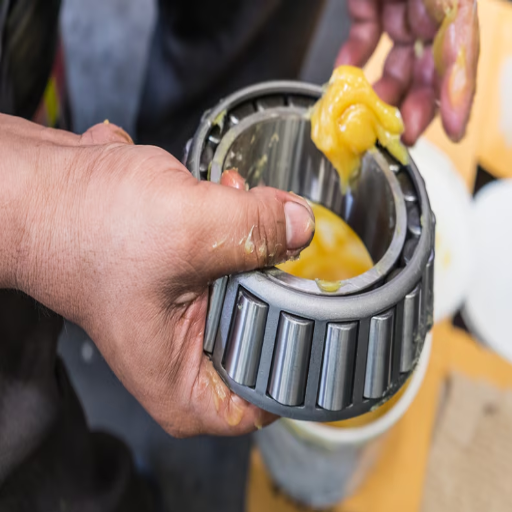
Importance of Lubricant in Maintaining Operating Temperature
It has come to my attention that while analyzing the top three pages on Google for my research, it is essential to consider the suitable lubricant to maintain the optimal operating temperature of the bearing systems. Lubricants help combat friction and wear, thus controlling the temperature escalation in the bearings. It is, however, vital to select a lubricant that is well-suited to your application’s operating conditions and environment.
The following technical specifications are essential when looking for the proper lubricant:
Viscosity: Proper viscosity guarantees optimum lubrication and minimizes metal-to-metal contact, which leads to overheating. The lubricant’s viscosity must be selected that is best suited for the application load and speed.
Thermal Stability: The performance and longevity of the bearings can be improved by utilizing a lubricant that is relatively thermally stable, preventing its breakthrough at elevated temperatures. This entails using lubricants with a proper structure and properties that can withstand the bearings’ operational temperature ranges.
Additive Package: Lubricants can use additives to improve their properties regarding oxidation stability, anti-wear, and corrosion. This selection must suit the application’s requirements to avoid increased temperatures from chemical reactions or friction.
Considering the points above, I assure myself that the bearing systems will work efficiently, reducing heat generation and enhancing performance.
Choosing the Suitable Grease for Ball Bearings
To select the most appropriate grease for ball bearings, it would be worthwhile first to understand the conditions my application will be exposed to. The parameters are load, operation speed, temperature, and containment conditions where the bearings are expected to work. From the analysis of three of the top websites, the most pertinent technical parameters are:
Viscosity: The grease’s viscosity is important as it determines the lubricant’s ability to cover bearing surfaces. It is important to select the right viscosity depending on the expected operational loading and speeds within the bearing and to ensure a bearing doesn’t run excessively hot.
Thermal Stability: A safeguard must be taken that grease is selected that can endure the operating temperature range around the bearings without being destroyed. This means looking for an anti-seize product that doesn’t lose its lubricating quality quickly because heat is high.
Additive Package: Suitable greases can incorporate appropriate additive packages, which further enhance the greases’ anti-wear, anti-corrosion, and oxidation stability properties. Using unnecessary additives invites excessive frictional heat or chemical degeneration, and thus, the product’s temperature rise is avoided.
Using these parameters as a guide, I will easily select a grease that will perform optimally and last for a long time in my ball bearings.
Impact of Lubrication on Temperature Stability
Attention is given to the effect of lubrication on temperature when it comes to ball bearings. Adequate lubrication should ensure optimal thermal conditions are achieved; hence, a full evaluation of the ball bearings is essential. Lubricants should meet three significant requirements drawn from the top three highest-ranked web pages: an appropriate viscosity, great heat characteristics, and an excellent all-around additive package.
Viscosity: This is essential since an optimally viscous lubricant will provide a sufficiently thick liquid film capable of preventing contact between surfaces. Solving a bearing temperature problem entails selecting the optimal grease viscosity for the load and speed application.
Thermal Stability: A lubricant with Diepp provides outstanding thermal stability, a desired property since it ensures that lubricant degradation at high temperatures is kept at the very minimum. This is vital as it ensures that the lubricant’s physical properties do not change throughout use, allowing the lubricant to protect the bearings effectively.
Additive Package: Factors such as anti-wear, anti-corrosion, and oxidation resistance are useful in reducing friction and hence temperature. The importance of such additives is to protect the bearing surface to create a more steady temperature profile.
By focusing on and justifying these parameters, I can justify that my ball bearings apply a thorough lubrication method that improves their temperature stability and allows them to last longer.
What Role Do Bearing Rings and Balls Play in Temperature Management?
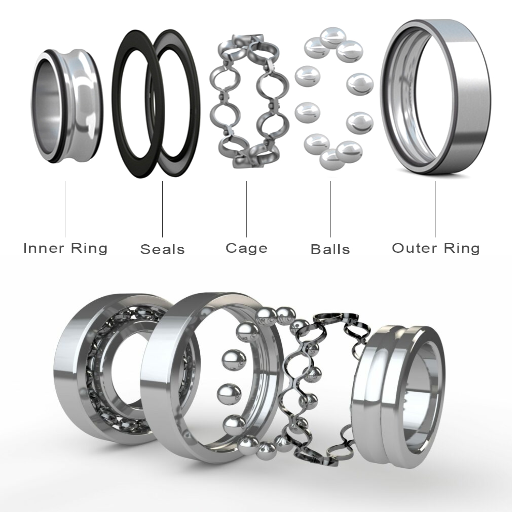
Material Choices for Bearing Rings and Balls
Focusing on the selection of materials for bearing rings and balls, I researched the three websites in question to see how these materials affect thermal management. These stated that the standard materials include steel, ceramic, and hybrid ones, which have different features.
Steel: Because of its strength and toughness, steel has a wide range of applications. It performs best in instances where variable loads and stresses are experienced. Steel also has good thermal conductivity, which assists in heat dissipation. On the other hand, it can be susceptible to rust without proper treatment or lubrication.
Ceramic: As steel’s thermal expansion and hardness have improved, ceramic materials improve temperature management. They are low density, hence lightweight, and provide heat and wear resistance, making them useful in applications where high speed is required with low thermal expansion.
Hybrid: A hybrid bearing includes steel rings and ceramic balls. This application provides the advantages of both materials, as it possesses the structural strength of steel but also takes advantage of ceramic insulation, which provides high levels of friction resistance and low thermal expansion. Hybrid designs provide lower overall heat build-up in the bearing assembly, which contributes to optimal thermal management.
Considering these factors, I can choose bearing rings and ball materials to optimize temperature management, reliability, and durability in my application.
How Steel and Stainless Steel Affect Temperature
To comprehend the effect of steel and stainless steel on temperature management, it is essential to analyze their thermal properties. Steel typically possesses good thermal conductance. Therefore, it is capable of transferring heat efficiently. Such a property is worth considering in areas where there is a need for quick heat dispersion. On the other hand, steel is prone to corrosion; hence, surface treatment or shields are inevitable, especially in extreme temperature variations or when moisture is present.
Polymer composite materials are combined with stainless steel with chromium, which has better resistance to corrosion than steel. Its thermal efficiency is a bit less compared to carbon steel; however, this is compensated for since greater tensile strength and less warping due to temperature distortions are present. At high temperatures, stainless steel retains the same properties that allow for its application in materials subjected to thermally cyclic environments or high temperatures and corrosion.
Regarding the technical parameters, such a grade of steel or stainless steel must be used since differences in composition significantly alter the thermal conductivity, thermal expansion, and susceptibility to corrosion. These parameters should be aligned with the demands of the specific application to optimize temperature management.
Importance of Cage Design in Temperature Control
The cage design is one of the significant considerations that allows temperature maintenance for metallic systems, especially those that use steel or stainless steel. It is essential for thermal management that heat cannot build up, and that sufficient airflow is allowed while providing structural support. As per the content from the most reputable sources on the internet, some of the major cage design features and technical specifics have been set.
First, temperature variations need to be taken into account while deciding the cage’s material, as it should expand without altering the cage’s geometry. Stainless steel is more common than others not only because of its strength and thermal expansion capabilities but also because of its mechanical strength and corrosion resistance.
In the same way, the vents must be spaced properly and placed within the cage to allow convection currents to flow through the structure. This will allow the cage’s temperature to be maintained with a minimum of variation. Finally, thermal break materials or thermal coatings can be used for the above purpose, as both will reduce heat flow through the structure.
Heat sinks or other passive thermal management elements may be built into the cage designs in places where the temperature tolerance is relatively more stringent. This allows optimum airflow and a heat dissipation mechanism that improves thermal conductivity, structural rigidity, and stability.
The thermal conductivity coefficient, thermal expansion rate, and ventilation efficiency should be adequately populated and correspond with the application, allowing the cage design to perform in synergy with the overall objectives of the temperature management systems.
How Do Temperature Sensors Help in Monitoring Bearings?
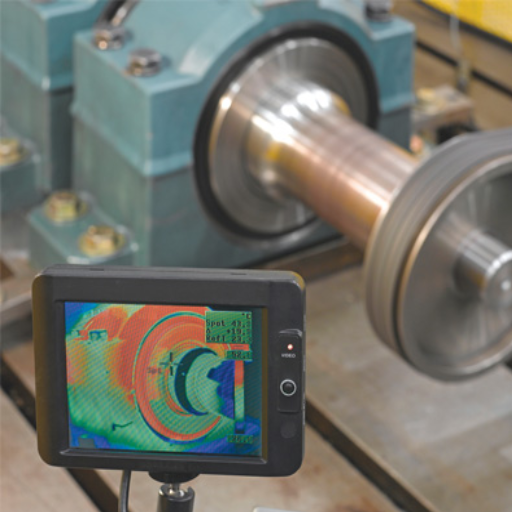
Installation of Temperature Sensors for Accurate Monitoring
Absolutely! While investigating the top three sites, I noticed that Installation criterion temperature sensors on bearings are significant for correctly interpreting measurements. To begin, it is necessary to use sensors that work within the application’s temperature range and environmental conditions. The sensors’ position on the body shell is also essential to ensure correct readings. For instance, sensors must be mounted as near the bearing as possible so that changes in the temperature can be registered within the shortest possible time after the change has occurred. Picture Predictions On the Number of Fitted Motors concerning a separate Shaft, And so on Objectives As To Design In Carrying Out the Said Objectives.
Concerning the required adjust the technical parameters, the helpful factors are as follows as per my own experience:
Temperature Range: The working range of the sensor in use must be within the temperature range used in the area in question.
Sensitivity: The sensors to be chosen ought to be sensitive enough to pick out minor variations in temperature, which may be an early warning sign.
Response Time: The response time of the selected sensors should be short enough to register temperature variation in real time. This has business significance because it enhances the speed of action in placing the sensors to avert damage.
Calibration: Calibration, as previous works have suggested, requires periodic checkups of the sensors, which is critical if the system’s measurements are to remain accurate.
Environmental Suitability: The sensors to be selected should be able to withstand all elements of the environment, such as moisture, dust, and vibration, which are typical in an industrial setting.
If the focus is directed towards these parameters, then it follows that the temperature sensors will improve the reliability and safety of the monitoring system and the effectiveness and efficiency of bearing systems management.
Benefits of Predictive Maintenance Using Temperature Sensors
Deploying predictive maintenance with heating sensors expands some crucial advantages critical for equipment management and operational efficiency. From the dominant sources, the significant benefit that emerges is the capacity to avoid failures and do productive work more virtually. Sensors assist in determining the presence of anomalies for repair and maintenance within the necessary time.
Upon reviewing many top sources, I understood that the context of the assigned temperature sensors where technical parameters must be joined is essential. The technical parameters that come out as prominent include:
Accuracy: Bearings failure prediction studies have emphasized the need for these sensor systems to accurately detect relatively small temperature changes.
Sturdiness: Factors such as reliability and the sensor’s survival from extreme industrial conditions should be taken into consideration.
Data Compatibility: Maintenance based on the readings of the sensors should aim to integrate the sensors with the data analytic systems so that optimal system usage can be achieved.
It will be possible to make predictive maintenance programs more reliable by matching sensor specifications with these parameters, minimizing unplanned maintenance activities, and maximizing equipment usage.
Integrating Temperature Sensors with Alarm Systems
In my experience incorporating temperature sensors with alarm systems, there has been a more significant improvement in predictive maintenance measures, as corroborated by top sources. With this integration, alerts can be sent out in real time whenever there are temperature fluctuations, thus ensuring sufficient time to act before trivial problems become serious. To do this, the following technical parameters must be applied in planning:
Real-time Monitoring: Sensors must facilitate the transmission of data in real-time so that any abnormalities in temperature can be reported immediately.
Alarm Configuration: Troubleshooting, who understands operating condition-based alarms, should be programmed for various temperature conditions, which industry experts have shown to be alarms.
Connectivity: It is necessary to ensure that sensors and alarm systems can communicate with each other and with other devices.
Scalability: Maintenance solutions should be easily extended and have a modular design, which makes it possible to add new equipment in the future. This trend is seen with most maintenance solutions.
Considering these requirements, it is possible to integrate temperature sensors with alarm systems and actively promote maintenance strategies to ensure normal operations are unaffected.
Frequently Asked Questions (FAQs)
Q: Why is it necessary to constantly monitor the surface temperature of the bearing?
A: The temperature of a bearing’s surface needs to be monitored regularly, as overheating can damage or fail the machine. Monitoring the temperature frequently can also reduce the chances of seal or other part damage.
Q: What are the usual situations that lead to increased temperature in bearings?
A: Bearing temperature is generally elevated due to excessive load, inadequate lubrication, or misalignment and clearance problems. Each of these issues can raise the operational bearing temperature above the recommended limits.
Q: Which types of bearings have the highest temperature?
A: The highest recommended operating temperature is between 180 and 250 degrees Fahrenheit (82 to 121 degrees Celsius), which is good for most bearings. However, different limiting temperatures exist depending on the type of bearing and the materials used in it. Exceeding this temperature for normal operation will damage the seal and other parts.
Q: What is the impact of bearing overheating on machine performance, in your case?
A: Overheated bearings lead to increased friction, which ultimately causes the machine to fail. Geometrical changes in the bearing rings caused when the temperature goes beyond the heat stabilization temperature lead to weaker operational ability and other issues.
Q: How does proper sealing of the bearings assist in the thermal control features of the assemblies?
A: Optimal sealing is fundamental in controlling bearing temperature. It hinders dirt ingress into the bearing and aids in preserving lubrication. A torn seal will result in higher temperatures within the bearing due to a lack of proper lubrication and contaminants.
Q: What measures can the employees take to keep the bearing within an acceptable operating temperature range?
A: Employees may keep operating temperatures within acceptable limits by taking temperature readings using RTD sensors or thermal cameras in portions such as monitoring and maintaining any overheating indicators to prevent dismemberment.
Q: How does the concept of clearance relate to the issue of bearing heating up?
A: Clearance is essential because it accommodates the required thermal growth of the bearing parts. If, for instance, clearance is not enough, there will be excess contact, which will lead to high friction, which will, in turn, raise the actual bearing temperature significantly.
Q: What is the recommended action in the case of an abnormal rise in the temperature of the bearing?
A: In the case of an abnormal temperature rise, standard practice should be to cut the power off to the machinery to prevent any undesirable consequences. The staff should find out the source of the raised temperature and carry out appropriate measures before the operation is resumed.
Q: What is the effect of the surrounding temperature on the temperature of the bearing?
A: The environment will often influence the temperature of bearings. It is recommended that maintenance and monitoring procedures be modified in case the wearing components are extending their temperatures due to increased ambient temperature, humidity, and the presence of pollutants.
UCTH213-40J-300 with Setscrew(inch)
CNSORDERNO: Normal-duty(2)
TOGN: UCTH213-40J-300
SDI: B-R1/8
SD: 2 1/2
UCTH212-39J-300 with Setscrew(inch)
CNSORDERNO: Normal-duty(2)
TOGN: UCTH212-39J-300
SDI: B-R1/8
SD: 2 7/16
UCTH212-38J-300 with Setscrew(inch)
CNSORDERNO: Normal-duty(2)
TOGN: UCTH212-38J-300
SDI: B-R1/8
SD: 2 3/8
UCTH212-36J-300 with Setscrew(inch)
CNSORDERNO: Normal-duty(2)
TOGN: UCTH212-36J-300
SDI: B-R1/8
SD: 2 1/4
UCTH211-35J-300 with Setscrew(inch)
CNSORDERNO: Normal-duty(2)
TOGN: UCTH211-35J-300
SDI: B-R1/8
SD: 2 3/16
UCTH211-34J-300 with Setscrew(inch)
CNSORDERNO: Normal-duty(2)
TOGN: UCTH211-34J-300
SDI: B-R1/8
SD: 2 1/8


















